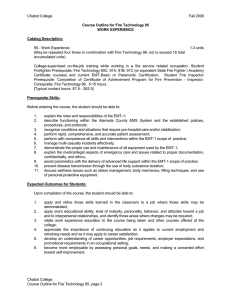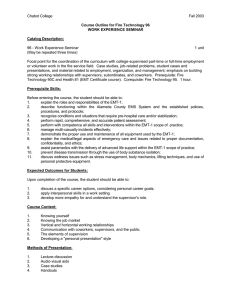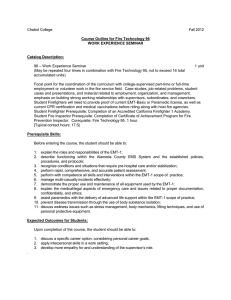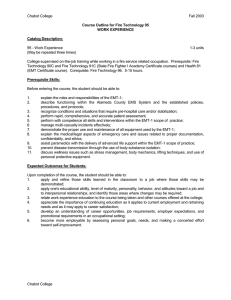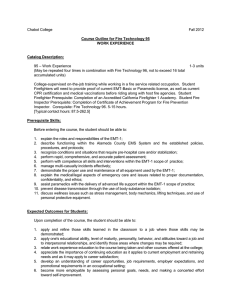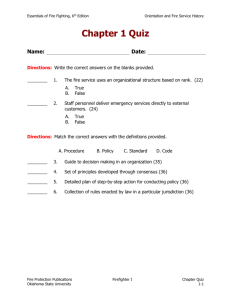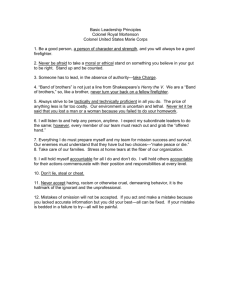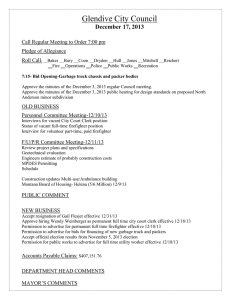Chabot College Fall 2008 96 - Work Experience Seminar
advertisement
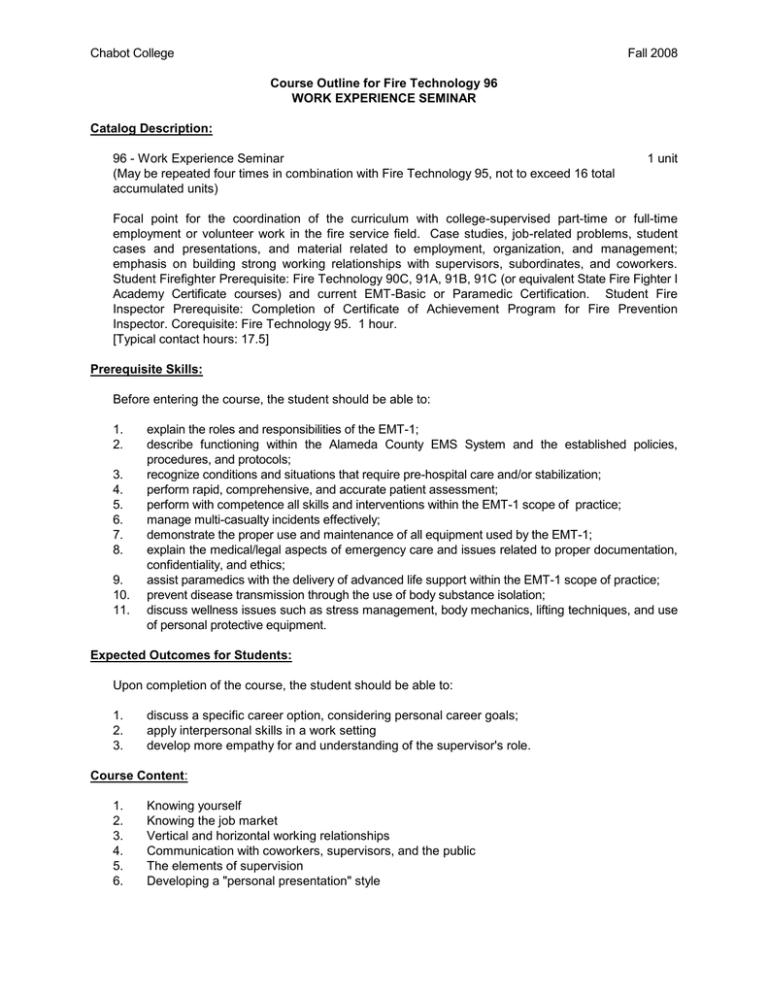
Chabot College Fall 2008 Course Outline for Fire Technology 96 WORK EXPERIENCE SEMINAR Catalog Description: 96 - Work Experience Seminar (May be repeated four times in combination with Fire Technology 95, not to exceed 16 total accumulated units) 1 unit Focal point for the coordination of the curriculum with college-supervised part-time or full-time employment or volunteer work in the fire service field. Case studies, job-related problems, student cases and presentations, and material related to employment, organization, and management; emphasis on building strong working relationships with supervisors, subordinates, and coworkers. Student Firefighter Prerequisite: Fire Technology 90C, 91A, 91B, 91C (or equivalent State Fire Fighter I Academy Certificate courses) and current EMT-Basic or Paramedic Certification. Student Fire Inspector Prerequisite: Completion of Certificate of Achievement Program for Fire Prevention Inspector. Corequisite: Fire Technology 95. 1 hour. [Typical contact hours: 17.5] Prerequisite Skills: Before entering the course, the student should be able to: 1. 2. 3. 4. 5. 6. 7. 8. 9. 10. 11. explain the roles and responsibilities of the EMT-1; describe functioning within the Alameda County EMS System and the established policies, procedures, and protocols; recognize conditions and situations that require pre-hospital care and/or stabilization; perform rapid, comprehensive, and accurate patient assessment; perform with competence all skills and interventions within the EMT-1 scope of practice; manage multi-casualty incidents effectively; demonstrate the proper use and maintenance of all equipment used by the EMT-1; explain the medical/legal aspects of emergency care and issues related to proper documentation, confidentiality, and ethics; assist paramedics with the delivery of advanced life support within the EMT-1 scope of practice; prevent disease transmission through the use of body substance isolation; discuss wellness issues such as stress management, body mechanics, lifting techniques, and use of personal protective equipment. Expected Outcomes for Students: Upon completion of the course, the student should be able to: 1. 2. 3. discuss a specific career option, considering personal career goals; apply interpersonal skills in a work setting develop more empathy for and understanding of the supervisor's role. Course Content: 1. 2. 3. 4. 5. 6. Knowing yourself Knowing the job market Vertical and horizontal working relationships Communication with coworkers, supervisors, and the public The elements of supervision Developing a "personal presentation" style Chabot College Course Outline for Fire Technology 96, page 2 Fall 2008 Methods of Presentation: 1. 2. 3. 4. Lecture-discussion Audio-visual aids Case studies Handouts Assignments and Methods of Evaluating Student Progress: 1. 2. Typical Assignments a. Term paper: Three-page essay on a one-year plan to become a firefighter, including goals and objectives b. Term project: Develop a written five-year career plan describing goals and objectives as a firefighter upon employment, including career aspirations within the fire service. Methods of Evaluating Student Progress a. Attendance b. Promptness in meeting paperwork deadline c. Term project d. Final examination Textbook(s) (Typical): 1. 2. 3. The Aspiring Firefighter's Two-Year Plan, Paul S. Lepore, Freespool Publications, 2004 Real Resume's for Firefighting Jobs, Anne McKinney, MBA, 2004 Smoke Your Firefighter Interview, Paul Lepore, Freespool Publications, 2003 Special Student Materials: None WB: FT 96 course outline.doc Revised: 01/31/08
